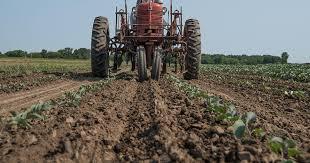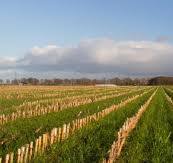
INDIANA —In a remarkable achievement for sustainable agriculture, the latest results from the Conservation Tillage Transect survey reveal that 1.7 million acres of farmland across all crops in Indiana are now under living cover. This significant milestone underscores farmers’ increasing adoption of cover crops, driven by their multiple benefits for soil health, water management, and overall farm productivity.

“Protecting soil, our most vital natural resource, is top of mind for our Indiana farmers, and year after year, our farmers are breaking their own conservation records,” said Lt. Gov. Suzanne Crouch, Indiana’s Secretary of Agriculture and Rural Development. “Through the implementation of cover crops and other conservation efforts, farmers are ensuring our land and water resources remain healthy and productive for years to come.”
Overwintering living covers (i.e., cover crops and small grains, like wheat) are known for their environmental benefits. By adding living roots to the soil for more months of the year, cover crops help increase soil organic matter and improve soil health. Cover crops also improve water infiltration into the soil, while other covers, like legumes, serve as natural fertilizers.

Although the conservation transect does not differentiate between cover crops and small grains, Indiana farmers typically plant fewer than 300,000 acres of small grains annually, so cover crops vastly dominate the 1.7 million estimated acres. Besides corn and soybeans, cover crops are planted on more acres than any other commodity crop in Indiana. Cover crops are typically grown in the fall after harvest and designed to protect the soil and keep roots in the ground throughout the winter, which improves soil health and helps filter water runoff.

“These results are very encouraging,” said Damarys Mortenson, state conservationist for USDA’s Natural Resources Conservation Service in Indiana. “The adoption of cover crops on such a large scale indicates that farmers are recognizing the long-term benefits of these practices for both their land and the environment.”
Farmers like Todd Armstrong, who operates a 1,100-acre farm in Washington County, have seen firsthand the advantages of cover crops.

“The water holding capacity and tilth of the ground has just improved so much, and my neighbors have even seen that,” said Armstrong. “Neighbors that worked ground yearly have stopped and started incorporating cover crops because they’ve seen how good it has worked for us.”
The cover crops and other overwintering covers planted last year prevented 1.8 million tons of sediment from entering Indiana’s waterways, which would fill about 18.4 thousand train freight cars.
The conservation survey also showed that about 69% of row crop acres were not tilled, and about 17% had employed reduced tillage over winter after the 2023 harvest. This early spring survey is not intended to quantify pre-planting tillage.
Despite the clear benefits, there are challenges to the widespread adoption of cover crops, including the initial cost of seeds and the need for additional management skills. However, various federal and state programs offer financial incentives and technical assistance to help farmers incorporate cover crops into their operations. One such initiative that helped contribute to the successful year for cover crops in 2023 was the Cover Crop Premium Discount Program (CCPDP). It is a program that provides a discount on crop insurance for planting cover crops. CCPDP assisted landowners in planting about 19 thousand acres of cover crops in 2023.

The conservation transect is a visual survey of cropland in the state. It was conducted between March and May 2024 by members of the Indiana Conservation Partnership, including the USDA Natural Resources Conservation Service, the Indiana State Department of Agriculture, Indiana’s Soil and Water Conservation Districts and Purdue Extension, as well as Earth Team volunteers, to show a more complete story of the state’s conservation efforts.
To see the complete conservation transect report, click here.










.png)








.gif)




